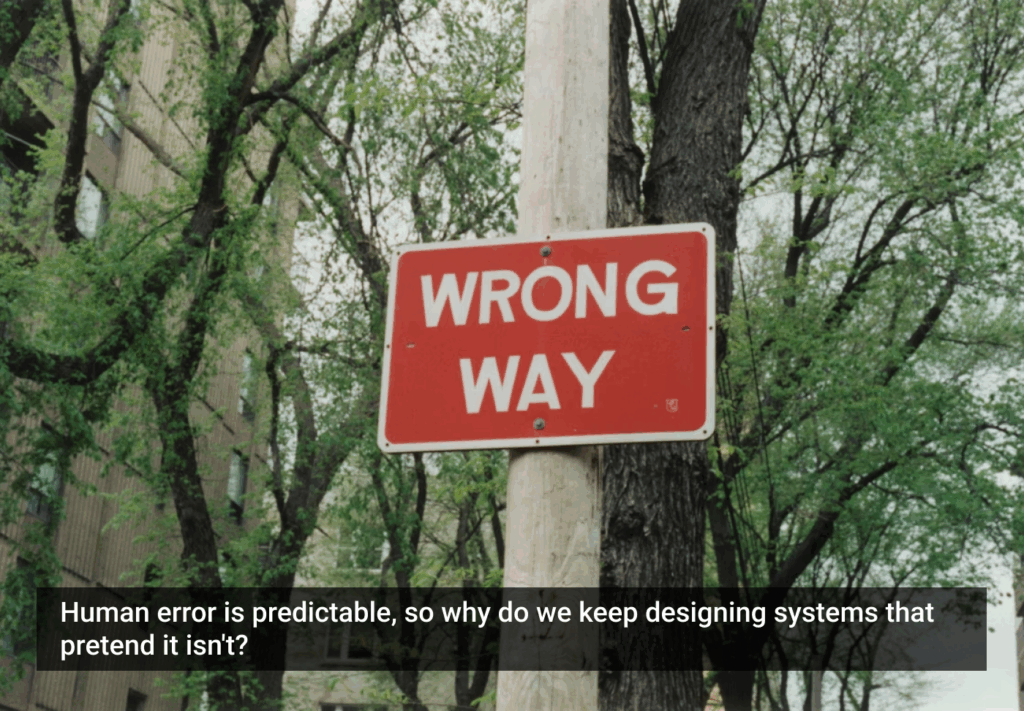- Design Theory, Design Thinking, Healthcare, Human factors, Usability, User Experience
Learn why healthcare blames human error instead of fixing broken design, and what needs to change.
Article by Paivi Salminen
Designing for Oops
- The article explains why mistakes happen, not because we’re careless, but because most systems are built as if humans never mess up.
- It demonstrates how slips (doing the wrong thing) and mistakes (thinking the wrong thing) require different solutions, including better design for slips and a deeper understanding of mistakes.
- The piece outlines how aviation and factories prevent errors by removing blame, allowing workers to stop production when something’s off, and designing systems that make it difficult to do the wrong thing, and asks why healthcare hasn’t done the same.
Share:Designing for Oops
Share this link
- January 15, 2026
4 min read

- Design Ethics, Design Psychology, Human-Centered Design, User Experience, UX Design
Discover how psychology influences addictive design and learn to create engaging experiences that respect user needs.
Article by Omran Khleifat
Designing for Dopamine
- The article explains why design succeeds when it triggers dopamine but fails when it prioritizes profit over users’ mental health.
- The piece shows how techniques like endless scrolling and notifications create engagement through reward loops, while becoming harmful when they manipulate users into addiction.
- It outlines the ethical design approach, demonstrating how good UX strikes a balance between engagement and well-being by using nudges carefully and adding real value, rather than creating dependency.
Share:Designing for Dopamine
Share this link
- January 13, 2026
3 min read

Article by Josh Tyson
Share:Why AI Scaffolding Matters More than Use Cases
Share this link
- January 5, 2026
1 min read

- Cognition, Design Psychology, Psychology, Psychology and Human Behavior, User Experience, User Research, UX Design
Explore why psychology, not pixels, decides whether users flow effortlessly or freeze in confusion, and how understanding cognition changes everything about UX design.
Article by Tushar Deshmukh
The Cortex-First Approach: Why UX Starts Before the Screen
- The article explains why UX design fails when it ignores what users’ brains are already doing before they even see the interface or click the first button.
- The piece shows how aligning design with users’ mental models and emotional states creates effortless experiences, while violating them causes hesitation even in “perfect” interfaces.
- It outlines the Cortex-First approach, showing how great UX starts by understanding cognitive patterns, emotional responses, and subconscious expectations rather than visual aesthetics.
Share:The Cortex-First Approach: Why UX Starts Before the Screen
Share this link
- December 23, 2025
6 min read

Article by Josh Tyson
Share:5 Predictions for Agentic AI in 2026
Share this link
- December 18, 2025
1 min read

Article by Josh Tyson
Share:The Biggest Company in AI You’ve Never Heard Of
Share this link
- December 18, 2025
2 min read


